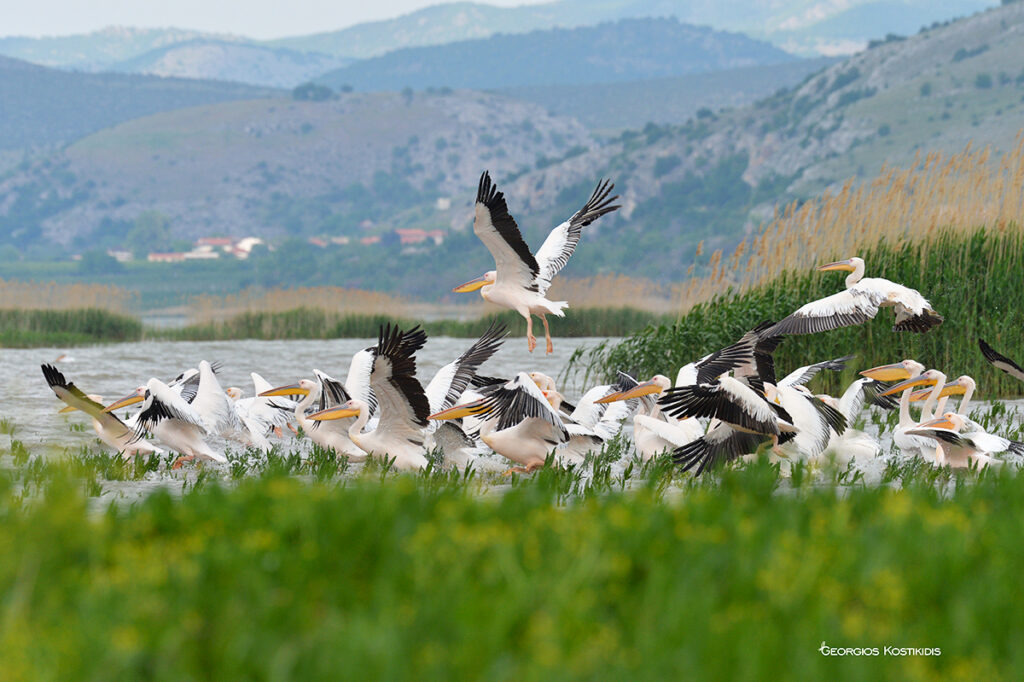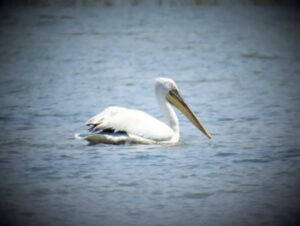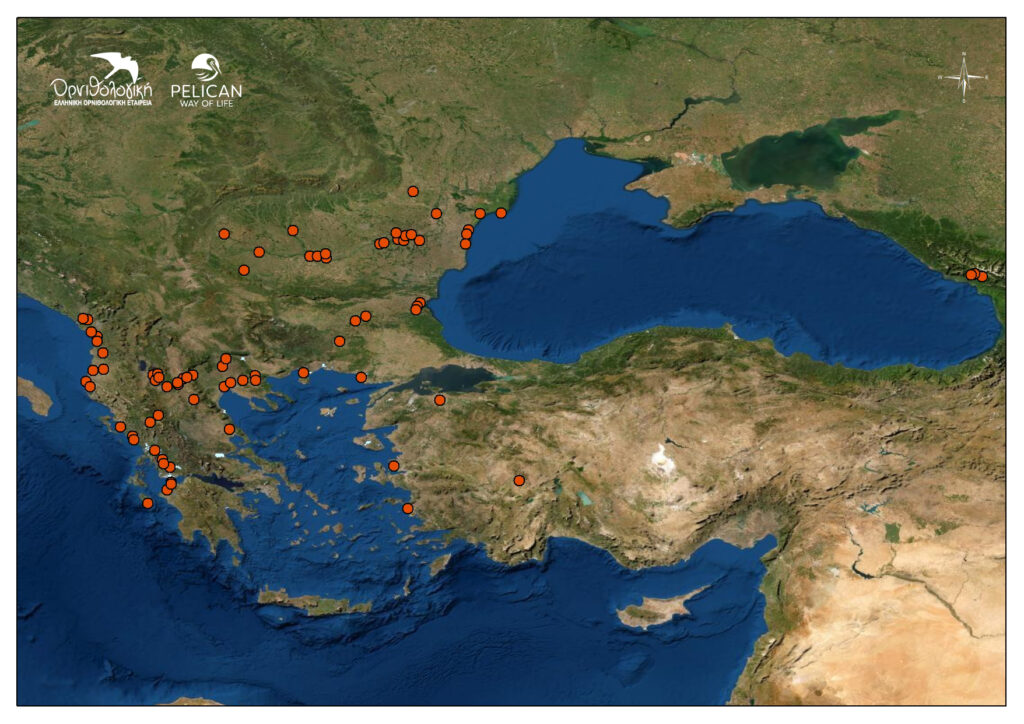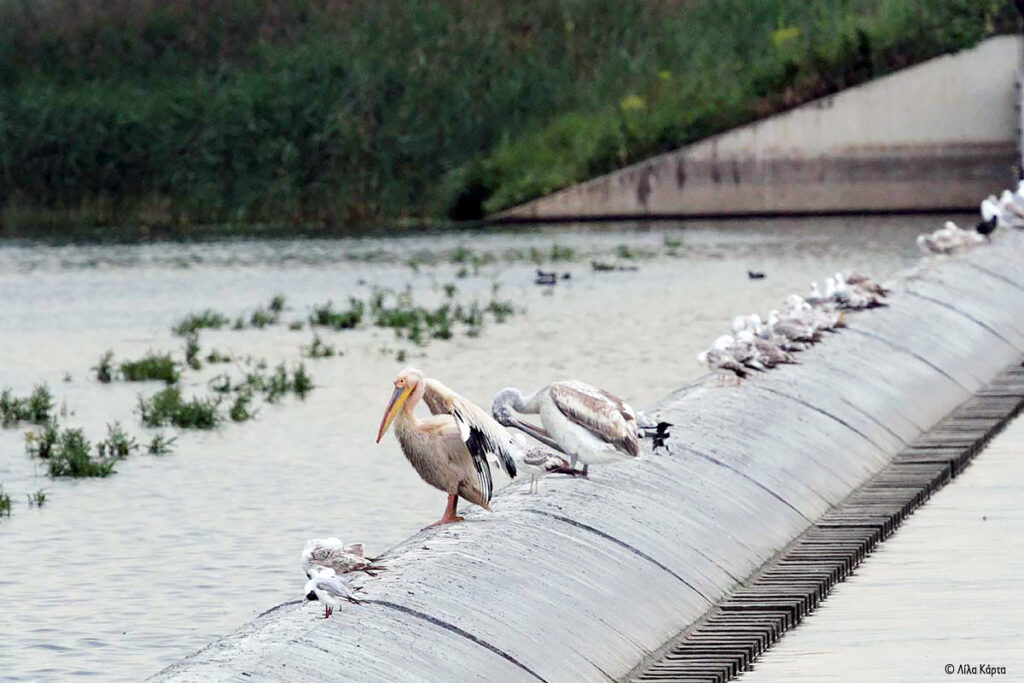The 5th South-East European pelican census took place in May 2022. For one day, hundreds of volunteers and scientists simultaneously visited 95 wetlands in Greece, Albania, North Macedonia, Montenegro, Bulgaria, Romania, and Turkey where they counted a total of 3,823 Dalmatian pelicans and 3,496 Great white pelicans.

This year’s census was carried out for one more year under the coordination of the Hellenic Ornithological Society (HOS) within the “Pelican Way of LIFE” initiative for Dalmatian Pelican conservation. Dozens of HOS volunteers participated in the event, as well as the staff from the Management Units of the many protected areas of the region, including Delta Evros, Lake Kerkini, Lakes Koroneia and Volvi, Delta of Axios, Loudia, Gallikos and Aliakmons, Lake Karla, Lake Pamvotida, Delta of Kalama and Acheron rivers, Amvrakiko wetlands and Kotyhi lagoon. The Society for the Protection of Prespa and the Kastoria Environmental Protection Society also took part in the action. Outside of Greece, dozens of BirdLife International volunteers and partners in Albania, the Republic of North Macedonia, Turkey, Bulgaria, and Romania, as well as the Natural History Museum of Montenegro, participated in the census.


The main objective of the census was to estimate the population and distribution of the Dalmatian pelicans in spring, inside and outside their breeding areas, as well as to estimate the reproductive dynamics of the species. The number and distribution of Great white pelicans were also estimated. These are long-distance migratory species, passing through Greece on the way to their breeding areas on the western shores of the Black Sea, while several birds breed in the country as well.
In Greece, 1,642 Dalmatian pelicans were counted this year, while the census of 2021 recorded 3,359 birds. It is clear that the species-devastating wave of bird flu, which in early 2022 claimed the lives of over 2,000 Dalmatian pelicans in the country, is responsible for this dramatic decline. Based on last year’s census, 5,200 Dalmatian pelicans were counted in the Balkans, while the corresponding figure for 2022 is only 3,222. So, the population decreased by almost 40% within a year, with the biggest fall observed in the Small Prespa Lake, where the bird flu affected many pelicans in the largest colony of the species in the world.

Nevertheless, for one more year, the Small Prespa Lake took the lead in terms of numbers with 412 Dalmatian pelicans counted (1179 birds in 2022). It is followed by Lake Kerkini with 268 Dalmatian pelicans, Messolonghi Lagoon, and Amvrakikos Gulf with 166 and 161 birds respectively. 92 individuals were counted in Lake Karla, while 23 Dalmatian pelicans were recorded in Lake Heimaditita, which also hosts a colony of the species.
The dramatic decline in the number of Dalmatian pelicans in the Balkans makes it absolutely necessary to ensure that the birds have a successful breeding season next year. The species seems to be entering a population downturn for the next few years and it will take time and effort to recover. Both the help of society and, in particular, the help of the State is essential to achieve this.

Experience has shown that the Great white pelican responds to conservation measures, so ecologists can help to recover its population with targeted actions that will ensure zero disturbance to its colonies and suitable nesting sites.